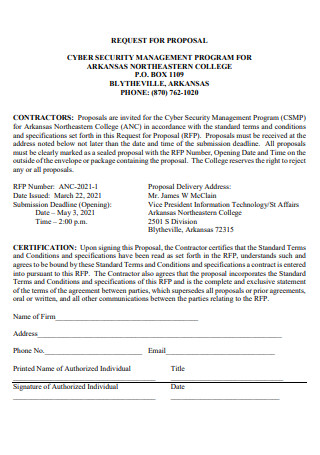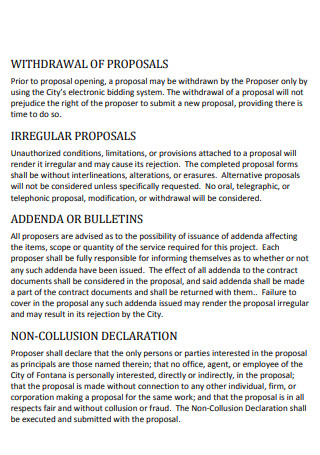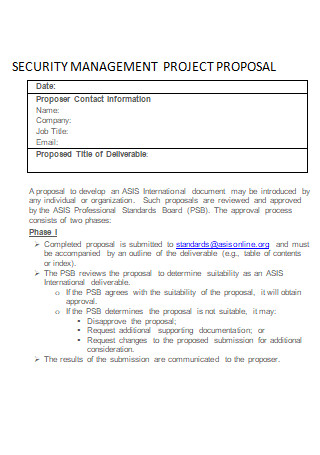3+ SAMPLE Security Management Proposal
FREE Security Management Proposal s to Download
3+ SAMPLE Security Management Proposal
What Is a Security Management Proposal?
Risks and Threats Areas Covered by Security Management
How to Create a Security Management Proposal
FAQs
What are the types of security risk handling options?
What are some of the security measures implemented in a company?
What is the importance of a Security Management Proposal?
What Is a Security Management Proposal?
Let’s tackle this whole concept one by one and from a company’s perspective. Security, from a company’s viewpoint, is the protection, safeguarding of a company’s assets. These assets range from the company’s employees or personnel, confidential data information, physical infrastructure, machineries, tools and equipment, documents, and the likes that basically run the whole operation of the company. Security management, according to an article in Management Media, is the identification of an organization’s assets (including people, buildings, machines, systems and information assets), followed by the development, documentation, and implementation of policies and procedures for protecting assets. Hence, a security management proposal is the bid to implement a security management plan in place, subject for approval from a specific level of authorities.
The security management, or security managers, aside from overseeing the protection of the company’s assets, their security measures also provide business continuity and contribute to the successful maintenance and upkeep of the company. The range of the job description security managers is broad. Some of these are keeping an inventory of the company’s assets; performing risk and threat assessment; maintaining and implementing security policies and procedures in place; protection against identity and data theft; prevention of fraud, terrorist, or external attacks; and protecting the physical infrastructure and workplace personnel. Security managers work hand in hand with the top management level of the company in preventing business disruption and losses. Overall, a good security management proposal serves as a business plan for implementing and maintaining these security measures in place.
Risks and Threats Areas Covered by Security Management
As we have mentioned, security management covers a broad and diverse range of areas that ensures protection and continuity of the whole business infrastructure operation. To be able to implement the protection and security in place is to be prepared for it, and part of being prepared is to identify what areas in an organization or a company are prone to security threat and risks. Below is the list of identified areas that are susceptible to threats and risks.
How to Create a Security Management Proposal
A key to a secured organization is having a good security management plan in place. Similar to a business and marketing plan, a security management plan covers the whole architecture of the organization security system, from the action plans to be implemented, or the preventive measures, to policies and procedures that must be followed within the workplace to ensure success and continuity of the organization. Like all kinds of management plans, it has to go through approval at the appropriate management level. We have on our website several management proposal templates to choose from, and we also have ones specifically made for security management. But if you want to know more about how to manually create one, here are some of the general steps on how to make a security management proposal from scratch to secure approval for the organization’s security plans.
Step 1: Identify the Type of Business and Do Risk Assessment
First, produce a brief summary of the type of industry the company is involved in. Highlight what are the potential specific risks or threats that area of that organization or business will be exposed to. This is the part where you detail the existing or a potential problem or issue involving security that the management needs to give attention to. Explain the current situation the organization has. Like in an objective or mission statement, explain what are the possible reasons that might lead the organization to be exposed to such risks and threats, and what is the purpose for the security management proposal. Do a risk assessment. Classify the risks and threats as low, medium or high, depending on what will be the impact to the organization’s structure.
Step 2: Presenting Security Plans Proposal
This is where you list down the proposed security measures or plans. The plans should be specific, measurable, and achievable. For example, when you are addressing the security risk to data information, your proposed plan could be strengthening the integrity of password encryption, regular maintenance and update of software, et cetera. Identify the steps you need to take for password encryption security. For the workplace health and safety risk, if you wanted to propose additional protective equipment in place, identify what those equipment are, explain the need for those equipment, and where they will be placed so that they could easily be accessible. You could also do an update on security protocols regulation to be enforced on the workplace.
Step 3: Implementation and Evaluation Process
When planning for the implementation of the measures to be taken to address the risks, identify what are the requirements needed. Include the manpower, or the personnel who will be assigned on it, the timeline of the implementation, the tools and resources to be used, and the costs involved as well. Explain what are the required skills, techniques, or experience required by the personnel working on it. Describe what are the roles and responsibilities for each personnel. You can write down the implementation process in a chart flow form. Indicate as well what will be the possible damage control remedy to take. Stipulate what will be the communication process when security risks or threats arise, like who is in charge of the front line and the back end solution, and who are the authorities to immediately contact. What will be the first step resolution, second, and so on. Also, refer to existing protocols of workplace safety and make some updates if necessary. For the budget, be practical and realistic in making and presenting the costs or estimated expenses. Remember that you will be working on the company’s budget plan. Also identify what will be the evaluation and audit process in place. Create a workplace inspection checklist as a necessary safety measure as well.
Step 4: Approval Process
Once you have created the structure of your security management proposals, get it approved by your superiors or by the top level management. You need to have an expressed, signed approval in place to serve as your documentation that your security management proposal is a go. Considering that there will be a budget to be used, it has to be communicated to all different top management department levels involved, including the CEO or the owner of the company.
FAQs
What are the types of security risk handling options?
These are the risk avoidance, risk spreading, risk reduction, risk acceptance, and risk transfer. Risk avoidance is the act of not being involved in any activities that have a high probability of risk or threat result. Risk spreading is limiting the loss by apprehending the risk or threat when it happens at the onset before it spreads out and creates a greater damage or impact. Risk reduction, or risk mitigating, is decreasing the threat impact by hindering any opportunities for full perpetuation of the act of threat. Risk acceptance. Risk acceptance happens when an organization accepts the loss, or a potential loss, and acknowledges that it doesn’t warrant enough time and resources to be spent to resolve it. Risk transfer is transferring the responsibility of the risk from one organization, department, company to another. It can also be coined as an outsourcing of risk management responsibilities.
What are some of the security measures implemented in a company?
For the physical infrastructure, it could be in the form of security guards or security services at entrances and exits; access control to some off-limits rooms via identification cards or biometrics or keycard locks; security cameras; and alarm devices. For data information, it could be in the form of password encryption. For health and safety, it could be fire and smoke alarms, sprinklers, fire extinguishers, et cetera.
What is the importance of a Security Management Proposal?
First, it identifies the existing and potential risks and threats to an organization. Next, it describes the role and process of the security management in place. Another important factor is that the security management proposal presents tangible solutions to address those threats and risks. Also, it helps educate the organization and spread awareness on the importance of security for the organization’s operation and business continuity.
Risk and threats are inevitable to any organization, but it doesn’t mean that it cannot be managed, mitigated and remedied. It is the responsibility of the security management team to ensure the protection of the whole organization, so that the desired success in goals can be achieved. With all kinds of threats and risks involved, it is important to have a good security management plan in place. In order to do that, the security team needs to prepare a good security management proposal and make sure to get it approved by the concerned heads. Making a security management proposal shouldn’t be as hard or as intimidating to do. Download one of our templates now, and see how easy and convenient it is to create that good and effective security management proposal!




